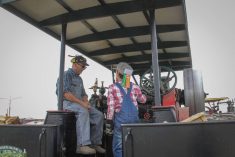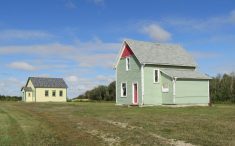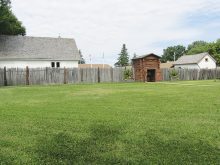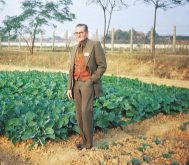July 23 dawned warm and somewhat smoky. At the southern edge of the province, over a dozen antique vehicles gathered.
The plan was to travel northwest from the U.S.-Canada border south of Crystal City to Brandon using mostly gravel roads. Vehicles in the Sunshine Highway Relic Run ranged from a red 1920 Overlander 4, driven by Murray Johanson of Langruth, to several automobiles from the 1930s.
They drove the Manitoba section of what was once known as the Sunshine Highway, a route that predates the Trans-Canada Highway, which started in Brandon and connected to a U.S. roadway ending in Sioux City, Iowa. The Manitoba section spanned about 193 kilometres.
Read Also

Seeding Indigenous agricultural prosperity
National Circle for Indigenous Agriculture and Food says Indigenous agricultural success needs strong relationships.
Gordon Goldsborough, Manitoba historian, author, and head researcher/webmaster for the Manitoba Historical Society, was among the trip’s organizers. Speaking to CBC Radio before the run, he said work started on the route in 1916, but paused due to the war effort. It resumed in 1919 with “the premise to stimulate travel.”
Back then, he noted, it was hoped the route would bring in American tourists.
The first cavalcade of cars came from the U.S. in 1921. Travel guides published in the 1920s by the Manitoba Motor League gave detailed instructions for following the route because no signs initially marked the way.
By 1925, however, the idea that the Sunshine Highway would become a major connector to the U.S. was falling flat. Highway 75 was becoming the preferred route, since it had gravel compared to the Sunshine Highway’s dirt. Complaints about the cost of upkeep were starting to flow in, Goldsborough noted, leading funders like the City of Brandon to hold back money.
The route
Relic run organizers used the guides from the 1920s to plan their own trip. They settled on visits to several towns and features along the way, included Crystal City, Rock Lake, Glenora, Glenboro, Baldur, the Stockton Ferry, Wawanesa and Rounthwaite, ending in Brandon at the Dominion Exhibition Building, more commonly known as the Dome Building, where their vehicles were briefly displayed.
The average speed of the drive was 40 to 48 km/h thanks to the gravel-heavy route. Starting at 8 a.m.,, it wasn’t until late afternoon that the historical vehicles rolled into the Wheat City.
People who wished to follow their progress with a modern car could follow on the gravel roads or drive an alternative route (mostly on pavement) and meet with the antique vehicles at various towns.
I met the convoy at the Stockton Ferry, which crosses the Assiniboine River northwest of Glenboro. It was not part of the original Sunshine Highway, but was added as a side trip to encompass another authentic feature of early 20th century road travel in Manitoba.
About half of the antique cars crossed the river, did a quick U-turn, and returned to the original side. In the 1920s, cars would have instead crossed the Souris River on a steel through-truss bridge built at Wawanesa in 1908.
After the ferry crossing, I was fortunate to ride in the back seat of one of the antique cars, a restored 1928 Model A Ford driven by Charlie Baldock of Killarney. We travelled via back roads as far as the town of Wawanesa, at which point I disembarked.
It was an interesting, somewhat dusty experience in a car that was roofed but sported open-air windows.
In Wawanesa, relic run participants paraded around town. At one point, a loudspeaker was brought out so that various cars could be named and described to spectators as they drove by. I felt a little like the queen, waving to the onlookers.
Many, although not all, of the Relic Run drivers could be classed as seniors. One exception, 16-year-old Kane Gervin, completed the trip in a 1928 Ford Model A.
Repeat event
This relic run was the second long-distance relic run in Manitoba. The first was held last year. Several of this year’s cars and drivers took part in both events.
Termed the Pine to Prairie Relic Run, that event covered a three-day period in July 2023. Five antique cars, all built before 1932, drove from the Ontario border across the province to the Saskatchewan border.
Their route was designed to follow the original Trans-Canada Highway as it was in 1932. Most of that drive was on pavement, although it diverged onto older routes where those roads still existed. Drivers followed PTH 26 from the Whitehorse Statue to Portage la Prairie on the north side of the Assiniboine River and jumped onto Provincial Road 351 from west of Sidney to the Camp Hughes Picnic Site.















